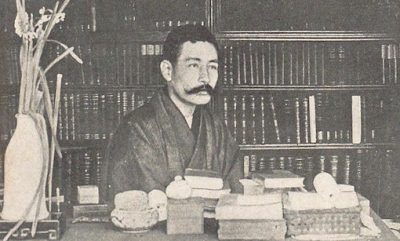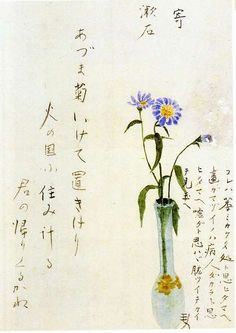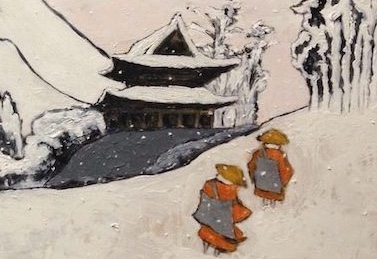Japan Novelist and Natsume Soseki: Influence of Masaoka Shiki
Lee Jay Walker
Modern Tokyo Times

The celebrated Japanese novelist Natsume Sōseki (1867–1916) endured a childhood filled with turmoil and emotional displacement. Born as the sixth child to aging parents who had not expected another mouth to feed—his mother already forty at the time—his arrival was met not with celebration, but with quiet dismay. In a household already burdened by hardship, the infant Sōseki was soon given away, a symbolic act that foreshadowed the loneliness and alienation that would later haunt his literary world.
He was adopted by Shiobara Masanosuke and his wife, a couple desperate for a child to fill their empty home. Yet fate, ever unkind, intervened again. Their marriage crumbled, and when Sōseki was only nine years old, the fragile sense of belonging he had begun to feel was torn away. Returned abruptly to his biological parents, he found himself a stranger in both households—caught between two families, and belonging fully to neither.
This fractured childhood, marked by rejection and instability, would later echo throughout his masterpieces, where themes of isolation, yearning, and the search for self emerge with piercing intensity.
Once more, tragedy cast its long shadow over the young Sōseki when he was just fourteen. The one figure who had welcomed him back into the family with genuine affection—his gentle mother—was suddenly taken from him. Her death struck like a cruel reminder that warmth and stability were fleeting illusions. His father, distant and restrained, offered little comfort. The tender bond between mother and son, rekindled only a few years earlier, was extinguished before it could fully bloom.
As if fate were not yet satisfied, further sorrow followed. In 1887, two of his elder siblings also passed away, deepening the well of grief that already filled his heart. The young Sōseki must have felt the world closing in—each loss another thread unraveling from the fragile fabric of his existence. Loneliness became his silent companion, and melancholy, his muse.

It should be remembered that adoption in pre-modern Japan often carried different social connotations, seen less as abandonment and more as practicality. Yet, for Sōseki, whose spirit was exquisitely sensitive, such rationalizations could never soothe the wound. Combined with the common specter of early death in that era, his experiences formed a crucible of sorrow and introspection. From this crucible emerged the literary soul who would later dissect human frailty and alienation with unparalleled depth—each page a quiet echo of the child who had loved and lost too soon.
His most celebrated works—I Am a Cat, Botchan, Kokoro, and Kusamakura—stand as luminous testaments to the restless mind and wounded heart of Sōseki. Each novel, in its own way, reflects the subtle agony and brilliance of a man forever wrestling with existence itself. Even his unfinished masterpiece, Light and Darkness, though left incomplete at his death, shimmers with a haunting intensity—as though the author himself were vanishing into the twilight of his own creation.
It was Masaoka Shiki (1867–1902)—a kindred spirit and poetic genius—who first recognized Sōseki’s hidden literary spark and urged him to write. The two men, bound by intellect and affection, shared a deep yearning for artistic truth amid a rapidly modernizing Japan. Yet, destiny once again proved merciless. Shiki, the luminous poet who had breathed encouragement into Sōseki’s soul, succumbed to illness at a painfully young age.
For Sōseki, the loss was profound. Another cherished voice silenced. Another mirror of the self shattered. Out of such grief and solitude, he forged his legacy—an enduring testament to the fragile beauty and unbearable sorrow of human life.
The words of Shiki cut to the very heart of human existence—brimming with both resignation and revelation. He wrote, “Until now I had mistaken the ‘Enlightenment’ of Zen: I was wrong to think it meant being able to die serenely under any conditions. It means being able to live serenely under any conditions.”

In the waning years of his brief yet incandescent life, Shiki transformed his suffering into words that gleamed like drops of dew upon the edge of mortality. Confined to his sickbed, wracked by the relentless agony of tuberculosis, he poured his fading strength into a trilogy of haunting reflections—A Drop of Ink, Stray Notes While Lying on My Back, and A Six-Foot Sickbed. Each diary stands as both confession and defiance: a testament to the mind’s radiance even as the body crumbles.
Yet, within these writings, there is no cry for salvation, no yearning for a paradise beyond the grave. Shiki’s world was not the realm of Abraham’s faithful, where redemption waits beyond suffering. Nor was it the Buddhist hope of release from the endless wheel of rebirth. Instead, his spirit flowed with a distinctly Confucian serenity and Shinto acceptance—a reverence for the order of nature and the quiet dignity of one’s appointed place within it.
Shiki beautifully said, “Even lying ill in bed, I am still the captain of my soul.”
How poignant that these words came from a man who faced death while still so young—each breath shadowed by suffering, yet each thought illuminated by profound clarity. This reflection, serene yet sorrowful, seemed to echo deeply within Sōseki, whose own life was a perpetual dance between intellect and despair, between isolation and the yearning for meaning. In Shiki’s reinterpretation of Zen, Sōseki may have glimpsed his own path—the eternal struggle not merely to endure life, but to live it with quiet dignity amid chaos.
For those who wish to step into the mind of this tormented yet transcendent genius, there is no better entry than I Am a Cat by Sōseki. Beneath its playful wit and sharp satire lies a mirror of human folly and longing—a gateway into Sōseki’s world, where humor hides melancholy, and every sentence shimmers with the fragile truth of existence. To read it is to walk beside Sōseki himself—half in laughter, half in sorrow—on the narrow bridge between the absurd and the sublime.
Epilogue: The Quiet Flame of Genius

In the twilight of the Meiji era, two souls—Sōseki and Shiki—walked side by side upon the fragile bridge between tradition and modernity. Both men, destined for brilliance, were also bound by fragility: one tormented by the loneliness of intellect, the other by the slow cruelty of disease. And yet, from their suffering bloomed a radiance that still illuminates the corridors of Japanese literature.
Shiki, confined to his narrow sickbed, faced death with unflinching clarity. His pen, trembling yet resolute, transformed pain into poetry—each line a quiet rebellion against decay. He sought no heavens and feared no hells; he lived within the truth of impermanence, accepting that beauty and sorrow are one.
Sōseki, haunted by abandonment and loss, wrestled with the ghost of modern consciousness itself. His novels became mirrors reflecting the fractured heart of a nation in transition—and within that mirror, he found his own reflection: weary, searching, endlessly human.
Though their lives were brief, their legacy endures like ink that refuses to fade. Both men, in their own way, transcended death—not through dogma or divine promise, but through the immortal power of words. Theirs is a legacy of honesty, of frailty elevated to art, of human sorrow rendered luminous.
Shortly before Shiki departed from this world he wrote: “The falling of cherry blossoms — I have no strength to rise and see them.”
And so, across the vast silence of time, Sōseki’s insight and Shiki’s serenity still speak to us: that to live, even amid despair, is a triumph—and that within every fleeting life, there burns a quiet, eternal flame.
https://fineartamerica.com/featured/japanese-buddhist-holy-men-in-the-deep-winter-sawako-utsumi.html Japanese Buddhist Holy Men in the Deep Winter

Modern Tokyo News is part of the Modern Tokyo Times group
http://moderntokyotimes.com Modern Tokyo Times – International News and Japan News
http://sawakoart.com – Sawako Utsumi and her website – Modern Tokyo Times artist
https://moderntokyonews.com Modern Tokyo News – Tokyo News and International News
PLEASE JOIN ON TWITTER
https://twitter.com/MTT_News Modern Tokyo Times
PLEASE JOIN ON FACEBOOK